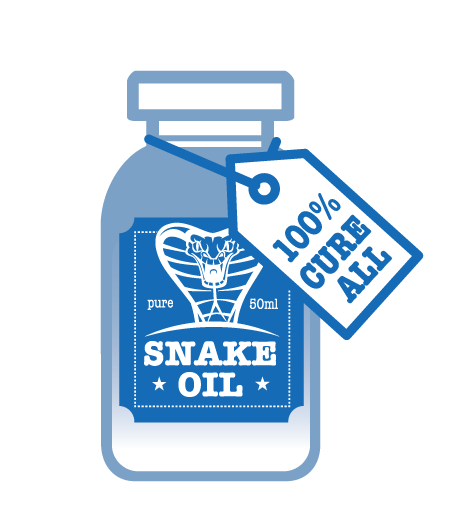Social Selling Without Situational and Contextual Content Is like Partying with Robots – Part 1
 This series of posts is about the relationship between marketing/sales communication and revenue generation. It is inspired by the sales messages that I receive regularly pushing products and services notoriously without any insight into or interest for my business or my current situation. Receiving such messages and calls is like being at a party with robots. They look human, but they are unable to ask situational questions, listen, analyze or provide a contextual response, so all they do is replay programmed propaganda messages irrespective of what you ask or tell them. It is a party with a lot of noise, but it is awfully boring and never leaves lasting impressions.
This series of posts is about the relationship between marketing/sales communication and revenue generation. It is inspired by the sales messages that I receive regularly pushing products and services notoriously without any insight into or interest for my business or my current situation. Receiving such messages and calls is like being at a party with robots. They look human, but they are unable to ask situational questions, listen, analyze or provide a contextual response, so all they do is replay programmed propaganda messages irrespective of what you ask or tell them. It is a party with a lot of noise, but it is awfully boring and never leaves lasting impressions.
Social Selling and content marketing
Let me emphasize that I don’t like the term “social selling” and that I don’t like the term “content marketing” either. Check out this post by Samuel Scott[1] to understand my disapproval: Everything the tech world says about marketing is wrong.
Social selling
“Social selling” is supposed to be the label for communicating with your potential named customers through social media. In this context it is just one of many ways to interact with an individual that you have identified as a potential customer and thus it is a sub segment of the arsenal of activities in your big sales toolbox.
Please don’t use the term “social selling” indicating that the discipline of sales has changed, just because we have a new set of channels available for communicating with our potential customers. The discipline of sales has not changed, but you need to learn how to navigate the new social media communication channels if you want to use them effectively for your sales purposes.
Sales was, is and will always will be the facilitation of “the last mile” of the buyers’s journey.
Content marketing
The term “content marketing” likewise raises my blood pressure.
 Is your web site “content”? Is your LinkedIn profile “content”? Is a brochure describing your product “content”? Is your annual report describing your company and your recent accomplishments in rosy terms and pictures “content”? Is a whitepaper describing how to deal with a typical challenge that your customers’ face “content”? Is a display ad in the New York Post “content”? Is a sponsored tweet “content”? Is a pre-roll on YouTube “content”? Is a billboard poster along the highway “content”? Is a personal email to a potential client “content”? Is a banner ad “content”? Is Google AdWords “content”? Is a mention of your company or products in the news “content”? Is a blog post “content”? Is a comment on LinkedIn “content”? Is your phone call to a potential client “content”?
Is your web site “content”? Is your LinkedIn profile “content”? Is a brochure describing your product “content”? Is your annual report describing your company and your recent accomplishments in rosy terms and pictures “content”? Is a whitepaper describing how to deal with a typical challenge that your customers’ face “content”? Is a display ad in the New York Post “content”? Is a sponsored tweet “content”? Is a pre-roll on YouTube “content”? Is a billboard poster along the highway “content”? Is a personal email to a potential client “content”? Is a banner ad “content”? Is Google AdWords “content”? Is a mention of your company or products in the news “content”? Is a blog post “content”? Is a comment on LinkedIn “content”? Is your phone call to a potential client “content”?
Yes, it is all content. However, you must tailor the content to the communication channel that you use and the objective you wish to serve. And this is where most companies fail.
Marketing and sales without content is like spaghetti Bolognese without pasta and meat. You can write a sentence about it, but it doesn’t make any sense in the real world and will look meagre on your plate.
The three types of content[2]
Let me for the sake of simplicity divide “content” into three categories:
- Propaganda
- Generic Need/Pain Content
- Situational and Contextual Content
Propaganda[3]
 Everything you produce that talks about your products/services, your company and your clients falls into this category. Companies simply cannot help painting an overly rosy picture when they tell their own stories. We all know this and we are all very skeptical when exposed to other’s propaganda. Brochures, fact sheets, display advertising, annual reports, commercials, press releases, sales presentations, web sites, demos and all direct marketing are primarily propaganda.
Everything you produce that talks about your products/services, your company and your clients falls into this category. Companies simply cannot help painting an overly rosy picture when they tell their own stories. We all know this and we are all very skeptical when exposed to other’s propaganda. Brochures, fact sheets, display advertising, annual reports, commercials, press releases, sales presentations, web sites, demos and all direct marketing are primarily propaganda.
Generic Need/Pain Content
 Everything you produce that is focused on the needs and pains of your potential customers falls into this category. Discussing how to deal with these needs and pains without pushing your specific products and services belongs here. White papers, eBooks, blogposts, keynote presentations and tutorial videos are typically the formats used for this type of content.
Everything you produce that is focused on the needs and pains of your potential customers falls into this category. Discussing how to deal with these needs and pains without pushing your specific products and services belongs here. White papers, eBooks, blogposts, keynote presentations and tutorial videos are typically the formats used for this type of content.
Situational and Contextual Content
 Anytime you engage in communicating or discussing with a specific named audience you should produce situational and contextual content. Comments to other people’s blog posts and contacting individuals through mail, phone or social media all require the production of situational and contextual content. Proposals and contracts are typically both situational and contextual.
Anytime you engage in communicating or discussing with a specific named audience you should produce situational and contextual content. Comments to other people’s blog posts and contacting individuals through mail, phone or social media all require the production of situational and contextual content. Proposals and contracts are typically both situational and contextual.
Read part 2
Download this series of posts as a whitepaper.
–ooOoo–
[1] Samuel Scott, Marcom Director at Logz.io, Techcrunch, April 12, 2016
[2] There is no direct relationship between format and content. Any type of format (print, web pages, video, presentations, pdfs, physical meetings, phone calls etc.) can be used for any type of content. However, it seems as the more control a company has over the format the more propaganda-like the content becomes.
[3] See Winch, Jonathan, Michael Best, and David Hoskins. 2011. The Death of Propaganda: B2B buyer behavior has changed – now it’s your turn (Eye for Image: Copenhagen).








